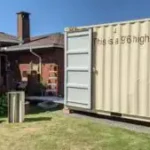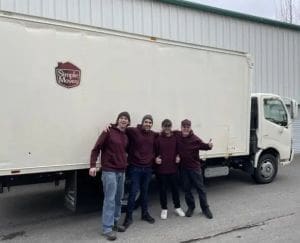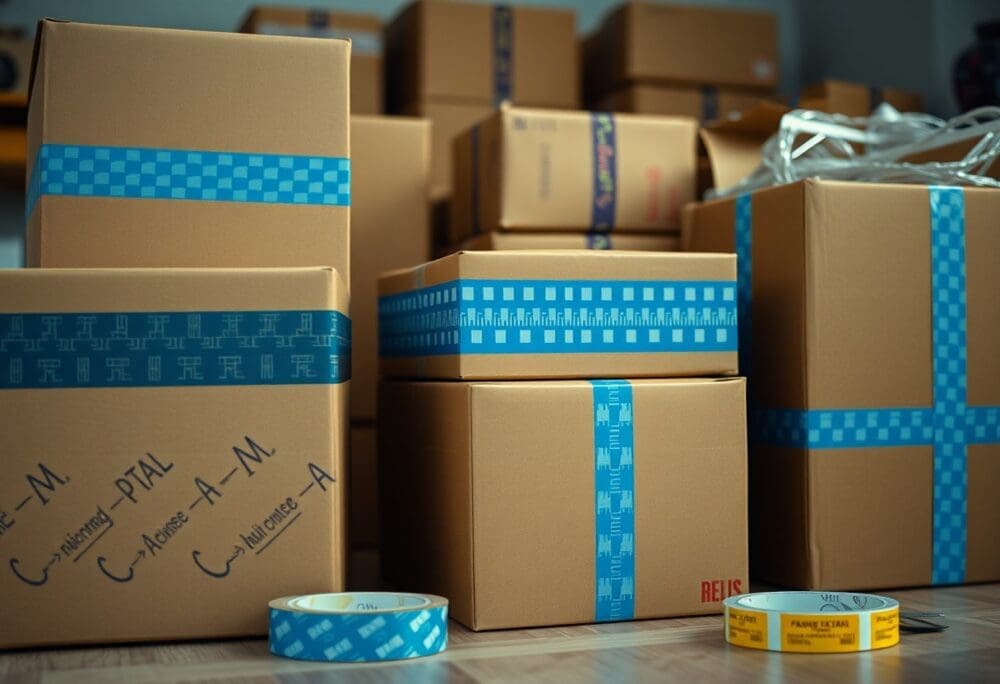Many movers rely on specific packing tape techniques to ensure your boxes stay secure during transit. Understanding these methods can help you prevent damage to your belongings and make your move more efficient. From the right tape to use, to mastering the application technique, you’ll gain insights that can enhance your packing game. By following these strategies, you can make sure your items arrive at your new location in the same condition they left.
Key Takeaways:
- Utilize the “H” method for sealing boxes: Apply tape along the bottom seams in an H shape to reinforce the box structure and prevent it from opening during transit.
- Make use of tape dispenser tools: These devices allow for smoother application and help in cutting the tape precisely, reducing waste and ensuring a tighter seal.
- Double up on critical seams: For heavier items or long-distance moves, adding an extra strip of tape along the top and bottom seams provides additional security and stability for the boxes.
Understanding Packing Tape
Before you begin on your moving journey, it’s vital to understand the importance of choosing the right packing tape. This unassuming material is vital for securing your boxes and ensuring that your belongings remain intact throughout the moving process. The right tape can make all the difference in protecting your items and making your move a smooth experience.
Types of Packing Tape
Behind the different types of packing tape, you will find a variety that suits your specific packing needs. Each type has its unique properties, offering different levels of adhesion, durability, and ease of application.
| Type | Properties |
| Standard Clear Tape | Basic sealing for lightweight boxes |
| Polypropylene Tape | Good for general use, affordable |
| PVC Tape | Strong, ideal for heavier items |
| Colored or Printed Tape | Useful for labeling and organizing |
| Heavy-Duty Tape | Best for securing fragile items |
- Identify your packing needs before selecting tape.
- Consider the weight of your boxes.
- Choose visibility when labeling with colored tape.
- Store tape in a dry part of your home.
- Thou should always test tape on a small box before use.
Importance of Quality in Packing Tape
With the wide array of packing tape available, it’s vital to prioritize quality to ensure your items are secure. A strong, reliable tape can withstand the rigors of moving, while poor-quality tape may fail, leading to potential damage to your belongings.
Types of tape can range from standard to heavy-duty, and the quality significantly impacts their performance. Investing in high-quality tape will provide superior adhesion, helping to keep your boxes securely closed. Additionally, a durable tape can withstand various environmental conditions, preventing it from peeling or breaking during transit. Choosing wisely will safeguard your items and offer peace of mind throughout your move.
Essential Packing Techniques
It’s important to employ effective packing techniques to secure your boxes and prevent any damage during your move. Understanding the best methods can make your packing process more efficient and ensure your items arrive at your new home in perfect condition. Below are some packing tape techniques that movers recommend for optimal box security.
The H-Taping Method
Method involves applying tape in a specific ‘H’ shape to reinforce the bottom of your boxes. Start by sealing the center seam of the box, then add two additional strips of tape along each side, creating the ‘H’. This method adds strength and stability, ensuring your boxes can handle the weight of your belongings without risking breakage.
The Strapping Technique
Above all packing techniques, the strapping technique is favored for its added durability. It consists of wrapping a length of tape around the box both horizontally and vertically, forming a ‘strap’ that unifies the structure of the box. This method is particularly beneficial for heavier items or fragile contents, as it prevents the box from giving way under pressure and reduces the chance of tears or rips during transportation.
The strapping technique not only enhances stability but also creates a sense of cohesion among the box’s contents. By wrapping tape tightly, you can prevent movement inside the box, which is especially important for breakables. Utilizing this method ensures your items are securely held in place, minimizing the risk of damage during your move.
Tips for Effective Sealing
Now that you’re ready to seal your boxes, it’s important to follow some key techniques to ensure they stay secure throughout the move:
- Use a tape dispenser for smoother application.
- Seal all edges meticulously to prevent any openings.
- Apply multiple strips of tape for added security on heavy boxes.
- Label your boxes for easier identification.
After applying these tips, you can have peace of mind knowing your items are well-protected during transit.
Proper Tape Application
On your journey to a well-packed move, effective tape application is vital. Start with clean, dry surfaces for optimal adhesion. Pull a piece of tape long enough to cover the seams and press down firmly to eliminate air bubbles. A smooth, continuous seal prevents any chance of boxes opening during the move.
Common Mistakes to Avoid
Between rushing through the packing process and using the wrong tape, there are several common mistakes to watch out for. Many people often underestimate the importance of quality tape, leading to failures mid-journey. Additionally, neglecting to tape all seams or applying tape unevenly can result in boxes coming undone.
Understanding these pitfalls can save you time and hassle. Using inadequate tape, like masking or duct tape, can cause boxes to fail. Always opt for strong packing tape specifically designed for moving. Additionally, ensure you don’t just apply tape the top—secure all sides of the box for a complete seal. By avoiding these mistakes, you enhance the safety of your belongings during transport.
Specialized Techniques for Fragile Items
To ensure the safety of your fragile items during the move, you should implement specialized packing tape techniques that add extra protection. Using tape wisely can help secure your items and minimize the risk of damage. By employing strong adhesive tape and combining it with proper cushioning, you can effectively safeguard delicate belongings like glassware, ceramics, and electronics. Your attention to detail in this process will help you arrive at your new home with peace of mind and intact treasures.
Reinforcement Methods
The most effective way to reinforce fragile items is by layering packing tape along the seams of the boxes and over the delicate contents. This helps prevent the box from opening unexpectedly during transport. Using multiple strips of tape will create a sturdy barrier, ensuring that even if the box is jostled, your valuables will stay securely cushioned inside.
Cushioning and Layering
For fragile items, layering is key to providing extra protection. Using bubble wrap, packing paper, or foam sheets as cushioning will help absorb any shocks. Ensure that items are tightly packed together to prevent movement, and then secure the cushioning in place with packing tape for added stability.
Hence, it’s important to start with a base layer of padding before placing your fragile items inside the box. After positioning your items, you should add more cushioning on top and around the sides. Finally, seal the box thoroughly with packing tape, encompassing the edges and seams, to create a strong, protective shell that minimizes any potential movement or impact during transit. This thoughtful approach will significantly reduce the likelihood of your delicate items breaking or chipping while on the move.
Best Practices for Labeling
Despite the chaos of moving, effective labeling can streamline your unpacking process. Use high-quality materials like Scotch Box Lock Packaging Tape, 1 Roll with Dispenser to securely seal your boxes while ensuring your labels stay intact. Designate a clear labeling system that includes room names and contents, making it easier for you to find what you need right away.
Clear Labeling Techniques
Best practices for labeling boxes include using large, bold lettering and waterproof markers to ensure your descriptions are legible and durable. Consider color-coding boxes by room or priority to enhance organization and efficiency during your move.
Using Tape for Visibility
Clear labeling can be even more effective when combined with tape for added visibility. Ensure your labels are visible by securely taping them to the side of each box, rather than the top, which can be obscured when stacked. This simple strategy guarantees that you can easily identify the contents of your boxes at a glance, streamlining your unpacking process.
Visibility is all about making your labeled boxes stand out amid the moving chaos. Use brightly colored tape to frame your labels, ensuring they pop against the cardboard backdrop. If space allows, add additional labels to multiple sides of the box for quick identification from any angle. This way, even during the hectic unpacking phases, you can quickly locate vitals without wasting time sifting through mislabeled boxes.
Tools to Enhance Packing Efficiency
For a seamless moving experience, you’ll want to utilize the right tools to enhance your packing efficiency. Proper tools not only save you time but also ensure your belongings are securely packaged. Investing in quality packing supplies can make all the difference in simplifying your move and protecting your items throughout the journey.
Tape Dispensers
On your packing journey, a tape dispenser can be a game-changer. It allows you to apply tape quickly and efficiently, minimizing the risk of tearing and ensuring a secure seal. With options ranging from handheld to tabletop models, you can choose one that fits your packing style and needs, making the process less tedious and more streamlined.
Additional Packing Supplies
Along with tape dispensers, enhancing your packing strategy with additional supplies can significantly improve your workflow. Items such as box cutters, packing paper, bubble wrap, and markers play a vital role in ensuring your boxes are well-prepared and labeled for the move.
Understanding the array of additional packing supplies available to you is key to a smooth move. Packing paper provides cushioning, while bubble wrap offers extra protection for fragile items. Box cutters allow for easy and precise opening of boxes, and markers help with labeling, ensuring everything is clearly marked for easy identification upon unpacking. By gathering these supplies ahead of time, you can create a more organized and efficient packing process, making your move less stressful and more enjoyable.
Final Words
Ultimately, employing the best packing tape techniques can make a significant difference in securing your boxes during a move. You should opt for a sturdy, high-quality packing tape and use the H method for sealing the bottom of your boxes, ensuring they can withstand the weight of your items. Additionally, don’t forget to create a clear labeling system to enhance organization. By following these proven techniques, you can increase the safety of your belongings while making your moving process much smoother.
Q: What is the best way to use packing tape for sealing boxes?
A: The most effective method for sealing boxes involves using a technique called the “H-tape” method. Begin by placing the box upright and folding down the flaps. Start by applying tape along the center seam where the flaps meet, ensuring the tape covers the entire length. Next, apply two additional strips on both ends of the box, extending the tape several inches beyond the edges of the flaps. This creates a strong seal to support the weight of the box and prevent any accidental openings during transport.
Q: How can I reinforce the corners of boxes when moving?
A: To reinforce the corners of boxes, start by paying special attention to the edges after sealing the top. Use packing tape to form an “L” shape around each corner—one strip of tape should extend down the side of the box while the other goes across the top flap. This method helps to distribute pressure more evenly across the corners and reinforces the overall structure. For heavy items, consider adding an extra layer of tape for added security.
Q: Is there a specific way to tape up the bottom of boxes for heavy items?
A: When packing heavy items, a technique known as the “bottom seal” should be employed. Start by folding all the flaps down and applying a minimum of three strips of packing tape across the bottom of the box. Ensure that the tape extends beyond the edges of the box for better adherence. Additionally, form a cross pattern by placing two strips of tape horizontally and a third strip vertically across the seam. This cross-taping offers extra strength and prevents the box from bursting open due to weight during the moving process.





